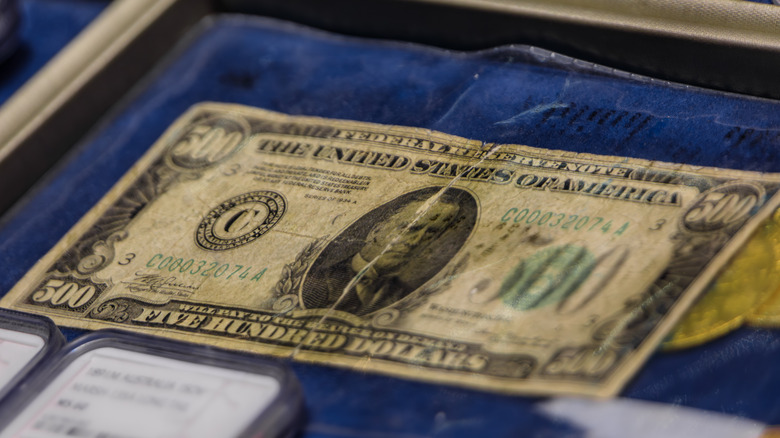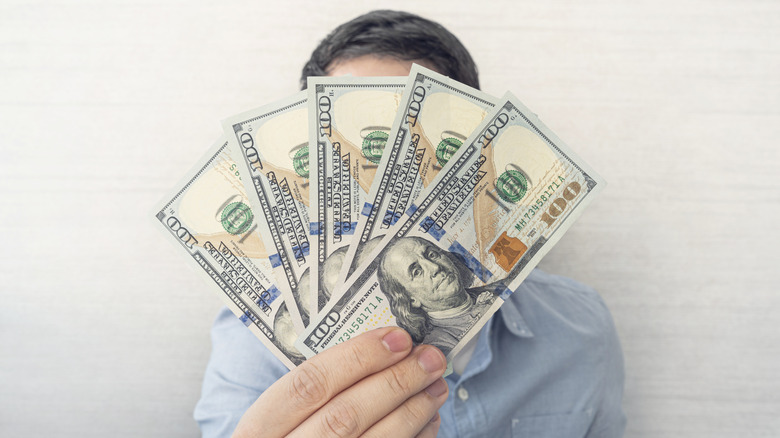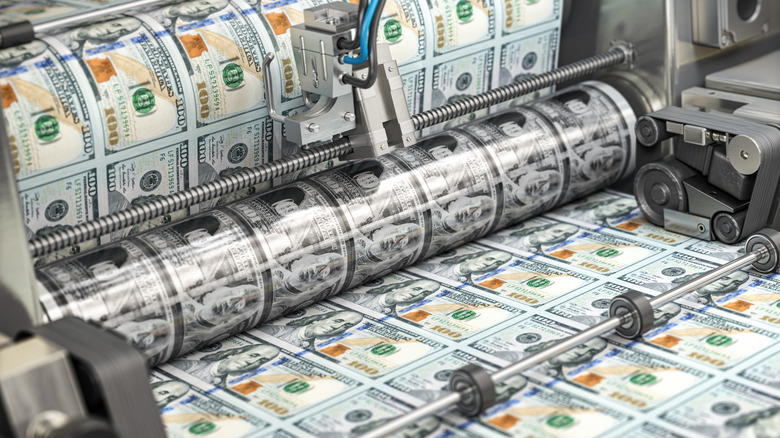The $500 Bill That Could Be Worth 3 Times As Much Money
The $100 bill is the largest denomination still issued by banks across the U.S. But once upon a time, the government printed $500, $1,000, $5,000, and $10,000 bills as well. There was even a $100,000 bill with the face of Woodrow Wilson on it.
These bills were discontinued decades ago, and while you could cash most of these bills for their face value at the bank should you ever come across one since they are still legal tender, they are worth far more to collectors. (The exception is the six-figured Wilson bill. Since they were never circulated and are illegal to own, the unexpected price of a $100,000 bill today may be jail.)
Case in point: the $500 bill. Collectors might be willing to pay $1,500 for a $500 bill with the year 1928 on it. Yet if that circa 1928 $500 bill has a star on it, too, it can be worth up to $10,000. If a 1934 $500 bill has a star on it, might also be worth $1,500. As for the most impressive raise in value, a rare $500 rainbow note from 1869 once sold for $1.4 million, though this is an example of a spectacularly rare piece of currency.
Why is this currency so valuable?
Much like seemingly ordinary coins you may have lying around the house, paper bills can be exchanged for a lot of cash if they have unusual traits or if they're rare. This includes cash used primarily for conversion into gold, such as an 1863 $100 gold certificate, which fetched a price of more than $2 million at auction. This rule applies to bills still in circulation, too. The $2 bill, which, while uncommon, is usually worth its face value, but can actually be worth up to $4,500 if it is sufficiently old and was not circulated. Bills with misprints or unique serial numbers are also highly prized.
Among the notable large denomination bills that sold for big money is a 1934-era $10,000 bill, which was sold at auction for 50 times its face value at an unexpected $480,000 in 2023. (Incidentally, the $10,000 bill was part of the plot line in the classic 1989 film "The Mighty Quinn," starring Denzel Washington doing a West Indian accent).
These big numbered bills are sought by collectors because there are not many of them left. There were more than 900,000 bills from the 1934 series printed, but now less than 40% of them are left, with each being worth at least $600. As for the $500 rainbow note from the 19th century, only three of them are around, making them some of the most valuable pieces of currency out there.
The life, death, and possible resurrection of the $500 bill
North Carolina and Virginia produced $500 bills in 1780 during the Revolutionary war, and various $500 bills were issued throughout the 19th century, including by both sides of the Civil War. The face of John Marshall, the longest serving chief justice on the Supreme Court, adorned the 1918 $500 bill, while President John McKinley was featured on the $500 bill after 1928.
While they were in active use, bills $500 and above were rarely used by most people. Most of the time they were utilized for large cash transfers between banks and agencies in the federal government. By 1945, the government stopped printing them. By 1969, the Federal Reserve ordered banks to send large denomination bills to the U.S. Treasury for destruction. The official reason for no longer printing and destroying them was their lack of use, since checks and electronic transfer methods rendered bills over $100 obsolete. However, their disuse was also due to worries that bills larger than $100 could be used for money laundering, organized crime and other unsavory acts.
Yet the $500 bill may not be gone forever. In 2017, economist Jay Zagorsky advocated in an article in The Conversation for the return of the $500 bill, arguing that such a large bill could be handy in the event of a huge natural disaster that renders ATMs and other electronic transfer useless. In 2024, Congressman Paul Gosar proposed the issuance of $500 bills with President Donald Trump's face on it as a means of addressing inflation under President Joe Biden and to give Americans alternatives to digital banking, his office stated in a release. A year later, Congressman Joe Wilson split the difference and proposed a Trump $250 bill, a release from Wilson's office announced.


